
views
Keeping Privet Hawk Moth Caterpillars as Pets
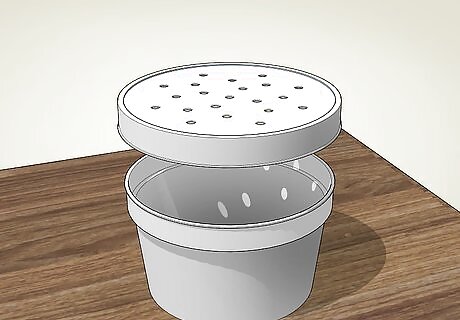
Poke air holes in the lid of a large plastic tub or container. Get a large plastic tub with a lid, such as a multi-gallon ice cream tub. Carefully poke some ventilation holes in the lid with the tip of a knife or sharp scissors. Make sure that the holes are only as big as the very tip of the knife or scissors so that the caterpillars can't crawl out. Privet hawk moth caterpillars are quite large, so the bigger the container, the better. You can also simply lift the lid every day to let fresh air in instead of poking ventilation holes, but it’s a good idea to make a few holes just in case you forget or can’t do this some day. You can use a clear container so you can see inside.
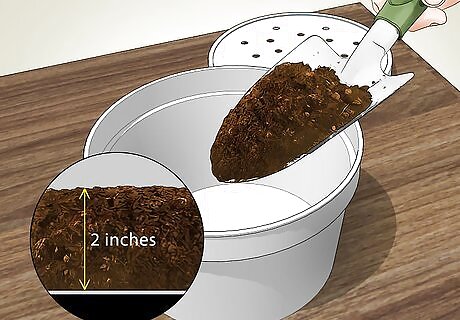
Put a layer of dry compost in the bottom of the tub. Place a 2 in (5.1 cm) layer of dried leaves and garden litter in the bottom of the container. Privet hawk moth caterpillars will burrow into this to pupate and turn into moths. Don’t put any garden soil into the container because this could introduce centipedes to the habitat that can harm caterpillars.
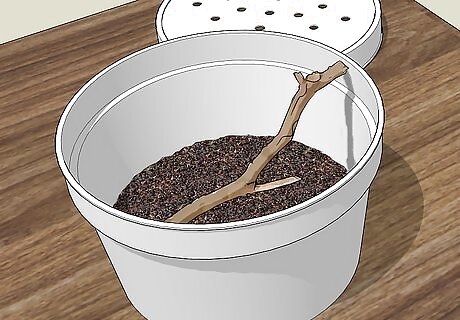
Lean a twig against the side of the container. Place a small stick at about a 45-degree angle between the wall and ground of the habitat. The privet hawk moth will use this when it is newly hatched to climb on and dry its wings. If you are planning to keep more than 1 caterpillar in the container, then provide a twig for each additional caterpillar. You shouldn't keep more than 2-3 in a single container to avoid overcrowding.
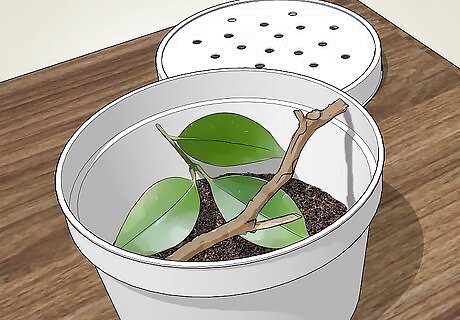
Put fresh privet leaves into the habitat. Put several fresh privet leaves in the container for your caterpillar to feed on. Make sure to keep adding fresh leaves once you add the caterpillar for as long as it is active and feeding. You can also use ash leaves or lilac. These are other favorite foods of privet hawk moth caterpillars.
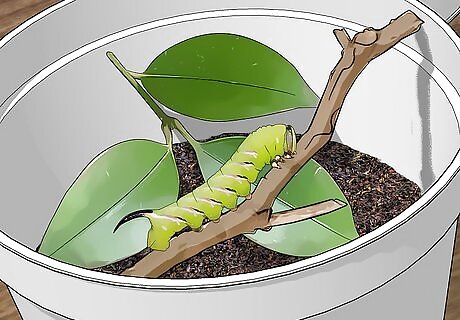
Place a privet hawk moth caterpillar into its new home and wait for it to pupate. Put the caterpillar gently into the container and close the lid. Check on it daily to see if it is still active and if you need to add more leaves for food. The caterpillars will stop feeding and burrow into the compost to pupate before winter. Keep the container somewhere out of direct sunlight where it does not get freezing cold either.
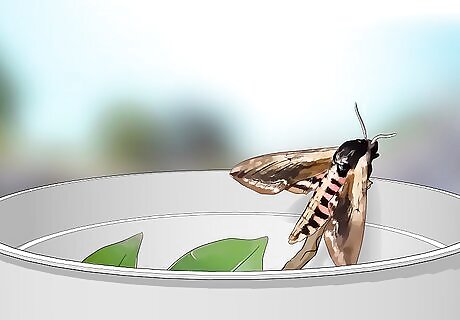
Wait for the moth to hatch and release it into the wild. Check your caterpillar every day from May to June until you see a new moth. Lift the moth out of the container with the twig and let it free into your garden or a park. You don’t need to feed caterpillars while they pupate. Just look in the container every couple of days to make sure your caterpillar is still inactive. Don't ever keep the adult moth. They need to be able to fly free in the wild so that they can help pollinate plants and be a part of your local ecosystem.
Attracting Privet Hawk Moths to Your Garden

Plant nectar plants that release a scent at night to attract moths. Create a border of nectar plants, such as jasmine or marjoram, around your garden. Provide a diverse array of native plants to increase the chances of attracting moths. Moths mostly fly at night, so nectar plants that release their scent at night are the best for attracting them. Plants that release their scent at night are called night-scented stock. Look for these types of plants at a nursery to put in your garden.

Put privet, ash, and lilac in your garden for larvae to feed on. Privet hawk moth larvae mainly feed on the leaves of these shrubs and trees. Plant a privet hedge around the perimeter of your garden, and plant lilac bushes and ash trees throughout the garden. Privet hawk moths also feed on guelder rose, honeysuckle, holly, snowberry, spirea, vibernum tinus, and forsythia.
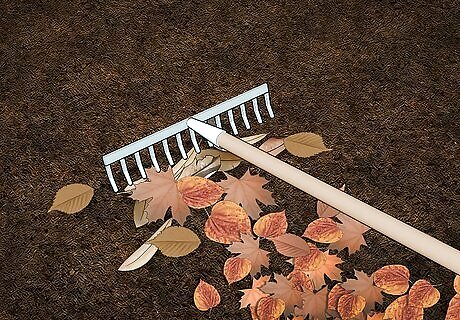
Make piles of leaves, twigs, and other plant debris for caterpillars to pupate. Rake up leaf litter and other garden debris into small piles. Place them in areas of the garden where they will not be disturbed so that the moths can burrow into them and pupate. Pupation is the stage of a moth's life during which they change from a larva into an adult. Privet hawk moths burrow deep into soil and debris to live out the pupation process.

Hang lights up around your garden to attract hawk moths. Install decorative lighting, such as lamp posts or string lights, around your garden. Turn the lights on at night during summer months to help lure the moths into your garden. Privet hawk moths are attracted to light and fly mostly during June and July. Adult moths will lay their eggs during July and larvae will hatch from July to September.
Identifying Privet Hawk Moths
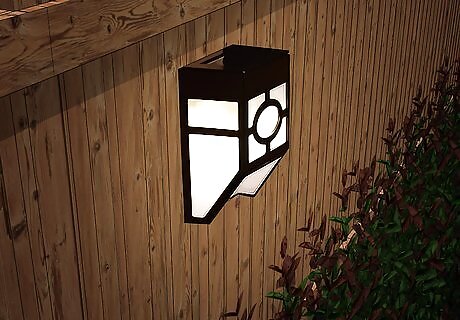
Check around lights in your garden, on fence posts, or on tree trunks. Adult hawk moths are attracted to light at night. Sometimes they are found resting vertically on trees or fence posts. Remember that adult privet hawk moths are active during June and July, so check for the moths during these months. Privet hawk moths are found in the UK, so if you live outside of the UK, you will not find them in your garden.

Look for moths with a large wingspan and pink and black torso stripes. Privet hawk moths have a wingspan of 9–12 cm (3.5–4.7 in). Their torsos and parts of their wings have alternating pinkish or purple and black stripes. The body of the privet hawk moth is torpedo-shaped.
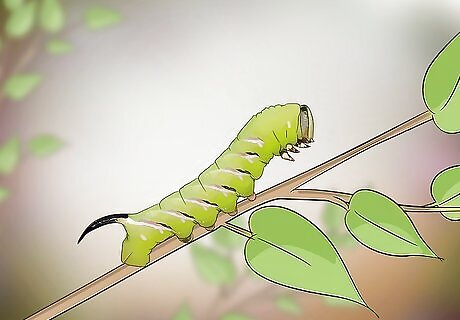
Look for large lime-green caterpillars in your garden from July to September. Privet hawk moth larvae are lime-green with purple and white stripes, a yellow spot on each of the segments, and a black hook on the tail end. Look on privet, lilac, and ash leaves where they are most likely to be found feeding. The caterpillars will burrow into soil and plant debris before winter and hatch into adult moths the following summer.


















Comments
0 comment